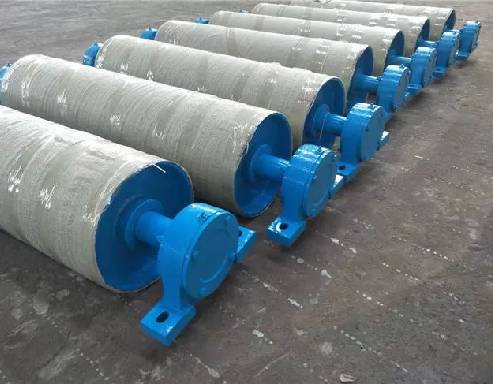 Afrikaans
Afrikaans  Albanian
Albanian  Amharic
Amharic  Arabic
Arabic  Armenian
Armenian  Azerbaijani
Azerbaijani  Basque
Basque  Belarusian
Belarusian  Bengali
Bengali  Bosnian
Bosnian  Bulgarian
Bulgarian  Catalan
Catalan  Cebuano
Cebuano  Corsican
Corsican  Croatian
Croatian  Czech
Czech  Danish
Danish  Dutch
Dutch  English
English  Esperanto
Esperanto  Estonian
Estonian  Finnish
Finnish  French
French  Frisian
Frisian  Galician
Galician  Georgian
Georgian  German
German  Greek
Greek  Gujarati
Gujarati  Haitian Creole
Haitian Creole  hausa
hausa  hawaiian
hawaiian  Hebrew
Hebrew  Hindi
Hindi  Miao
Miao  Hungarian
Hungarian  Icelandic
Icelandic  igbo
igbo  Indonesian
Indonesian  irish
irish  Italian
Italian  Japanese
Japanese  Javanese
Javanese  Kannada
Kannada  kazakh
kazakh  Khmer
Khmer  Rwandese
Rwandese  Korean
Korean  Kurdish
Kurdish  Kyrgyz
Kyrgyz  Lao
Lao  Latin
Latin  Latvian
Latvian  Lithuanian
Lithuanian  Luxembourgish
Luxembourgish  Macedonian
Macedonian  Malgashi
Malgashi  Malay
Malay  Malayalam
Malayalam  Maltese
Maltese  Maori
Maori  Marathi
Marathi  Mongolian
Mongolian  Myanmar
Myanmar  Nepali
Nepali  Norwegian
Norwegian  Norwegian
Norwegian  Occitan
Occitan  Pashto
Pashto  Persian
Persian  Polish
Polish  Portuguese
Portuguese  Punjabi
Punjabi  Romanian
Romanian  Russian
Russian  Samoan
Samoan  Scottish Gaelic
Scottish Gaelic  Serbian
Serbian  Sesotho
Sesotho  Shona
Shona  Sindhi
Sindhi  Sinhala
Sinhala  Slovak
Slovak  Slovenian
Slovenian  Somali
Somali  Spanish
Spanish  Sundanese
Sundanese  Swahili
Swahili  Swedish
Swedish  Tagalog
Tagalog  Tajik
Tajik  Tamil
Tamil  Tatar
Tatar  Telugu
Telugu  Thai
Thai  Turkish
Turkish  Turkmen
Turkmen  Ukrainian
Ukrainian  Urdu
Urdu  Uighur
Uighur  Uzbek
Uzbek  Vietnamese
Vietnamese  Welsh
Welsh  Bantu
Bantu  Yiddish
Yiddish  Yoruba
Yoruba  Zulu
Zulu carrying roller
The Importance of Carrying Rollers in Industry
Carrying rollers, often referred to as conveyor rollers, play a crucial role in various industries by facilitating the smooth transportation of materials along conveyor systems. These essential components enhance efficiency, reduce manual handling, and improve the overall productivity of manufacturing, logistics, and mining operations.
What are Carrying Rollers?
Carrying rollers are cylindrical components that support and transport goods on a conveyor belt. They are strategically positioned under the belt to ensure that it maintains the correct tension and alignment while allowing for smooth movement of materials. Typically made from durable materials such as steel, plastic, or rubber, these rollers come in various sizes and designs depending on their specific application.
Types of Carrying Rollers
There are several types of carrying rollers designed to meet the diverse needs of different industries
1. Plain Rollers Basic rollers that allow the conveyor belt to glide smoothly over them. They are commonly used in straight-line applications.
2. Impact Rollers Designed to absorb shocks and impacts when heavy materials are loaded onto the conveyor. These rollers are crucial in reducing wear and tear on the belt.
3. Return Rollers Positioned on the return side of the conveyor system, these rollers help guide the belt back to its original starting point, ensuring that it remains aligned throughout its use.
4. Self-Aligning Rollers Utilized in systems where belt misalignment is a concern, these rollers adjust themselves to keep the conveyor belt in proper alignment, reducing maintenance needs.
carrying roller

Applications of Carrying Rollers
The applications of carrying rollers are vast and varied
. In the manufacturing sector, they are used to transport materials from one production stage to another, streamlining operations and minimizing labor costs. In logistics and warehousing, carrying rollers guide products along conveyor belts, enabling faster sorting and distribution. The mining industry employs them for transporting heavy ores and materials, where their durability and strength are put to the test.Benefits of Using Carrying Rollers
The integration of carrying rollers into conveyor systems provides numerous benefits
- Increased Efficiency By enabling smooth and continuous movement of materials, carrying rollers help reduce downtime and enhance workflow.
- Cost-Effectiveness Although the initial investment in conveyor systems may be higher, the long-term savings in labor and operational efficiency make them a cost-effective solution.
- Reduced Workplace Injuries By minimizing manual handling, carrying rollers decrease the risk of injuries associated with lifting heavy objects, promoting a safer work environment.
- Customization and Versatility With various types of rollers available, businesses can customize their conveyor systems to meet specific needs, optimizing performance and productivity.
Conclusion
In conclusion, carrying rollers are a vital component of modern industrial operations. Their ability to support and transport materials efficiently contributes significantly to productivity and operational safety. As industries continue to evolve and embrace automation, the importance of these unassuming yet essential rollers will only grow, solidifying their place in the future of manufacturing, logistics, and more. Understanding their functions, types, and applications can help businesses optimize their conveyor systems, ultimately leading to greater success in an increasingly competitive market.
-
Revolutionizing Conveyor Reliability with Advanced Rubber Lagging PulleysNewsJul.22,2025
-
Powering Precision and Durability with Expert Manufacturers of Conveyor ComponentsNewsJul.22,2025
-
Optimizing Conveyor Systems with Advanced Conveyor AccessoriesNewsJul.22,2025
-
Maximize Conveyor Efficiency with Quality Conveyor Idler PulleysNewsJul.22,2025
-
Future-Proof Your Conveyor System with High-Performance Polyurethane RollerNewsJul.22,2025
-
Driving Efficiency Forward with Quality Idlers and RollersNewsJul.22,2025





























